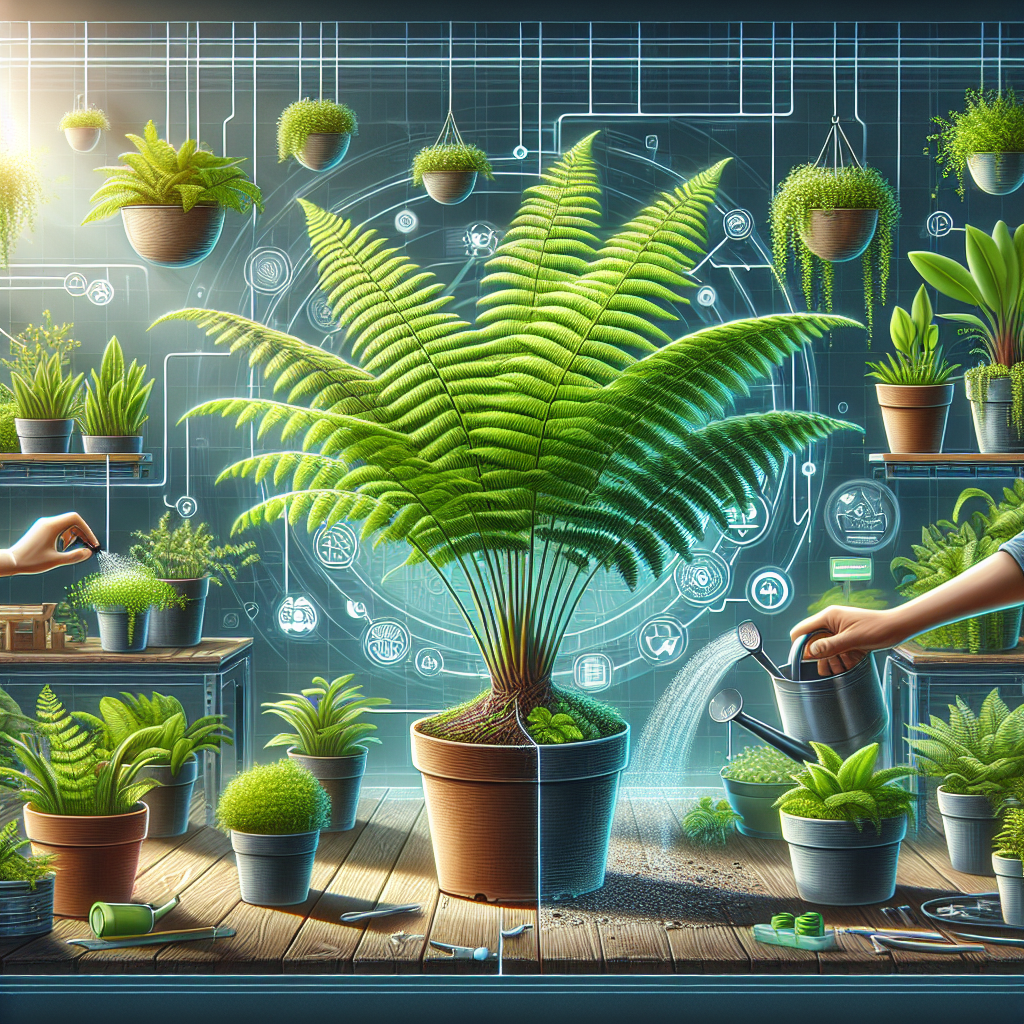Ferns are popular houseplants known for their lush, green foliage and elegant fronds. They add a touch of nature to any indoor space and are relatively easy to care for. However, caring for ferns in potting environments can be a bit tricky, as they require specific conditions to thrive. In this article, we will provide you with some valuable tips on how to care for your ferns in pots so that they can stay healthy and vibrant all year round.
When it comes to caring for ferns in potting environments, there are a few key factors to keep in mind. These include the type of potting mix you use, the amount of light your ferns receive, humidity levels, watering frequency, and pest control. By paying attention to these factors and following some simple guidelines, you can ensure that your ferns remain healthy and happy.
**Choosing the Right Potting Mix**
One of the most important aspects of caring for ferns in pots is choosing the right potting mix. Ferns thrive in a well-draining soil that is rich in organic matter. A good potting mix for ferns should be lightweight and airy while still retaining moisture. You can create your own mix by combining equal parts peat moss, perlite, and pine bark. Alternatively, you can purchase a pre-made mix specifically formulated for ferns.
**Light Requirements**
Ferns require bright, indirect light to thrive. Place your ferns near a window where they can receive plenty of natural light but avoid direct sunlight, as this can scorch their delicate fronds. If your fern starts to look leggy or pale, it may not be getting enough light. Consider moving it to a brighter location or supplementing with artificial grow lights.
**Humidity Levels**
Ferns are tropical plants that thrive in high humidity environments. Indoor air can often become dry, especially during the winter months when central heating is running. To increase humidity levels around your ferns, consider using a humidifier or placing their pots on a tray filled with pebbles and water. Misting the foliage regularly with water can also help create a more humid environment.
**Watering Frequency**
Proper watering is crucial when it comes to caring for ferns in potting environments. Overwatering can lead to root rot, while underwatering can cause dryness and wilting. Water your ferns when the top inch of soil feels dry to the touch but make sure not to let them sit in waterlogged soil. Water thoroughly until the excess drains out of the bottom of the pot.
**Pest Control**
Like all houseplants, ferns are susceptible to pests such as spider mites and scale insects. Keep an eye out for any signs of pest infestations such as webbing or sticky residue on the foliage. If you notice any pests on your ferns, treat them immediately with neem oil or insecticidal soap according to package instructions.
In conclusion, caring for ferns in potting environments requires attention to detail and consistency. By selecting the right potting mix, providing adequate light and humidity levels, watering correctly, and monitoring for pests regularly; you can ensure that your ferns continue to flourish and bring beauty into your home.
**FAQ**
1) Do I need to fertilize my potted fern?
Yes! Fertilize your potted fern once a month during its growing season (usually spring through fall) using a balanced liquid fertilizer diluted at half strength.
2) Can I propagate my potted fern?
Absolutely! Ferns can be propagated by division or spores. Division involves separating offsets from the main plant while spores require more time and patience but can also yield new plants.
3) Why are my potted fern’s fronds turning brown?
Brown fronds on a potted fern could indicate underwatering or low humidity levels. Make sure you are watering appropriately and increasing humidity around the plant if necessary.
4) How often should I repot my potted fern?
You should repot your potted fern every 1-2 years or when it becomes root-bound. Choose a slightly larger pot than its current one with fresh potting mix suitable for ferns.
By following these tips and guidelines on caring for your potted fern properly; you can enjoy their lush beauty indoors year-round!













